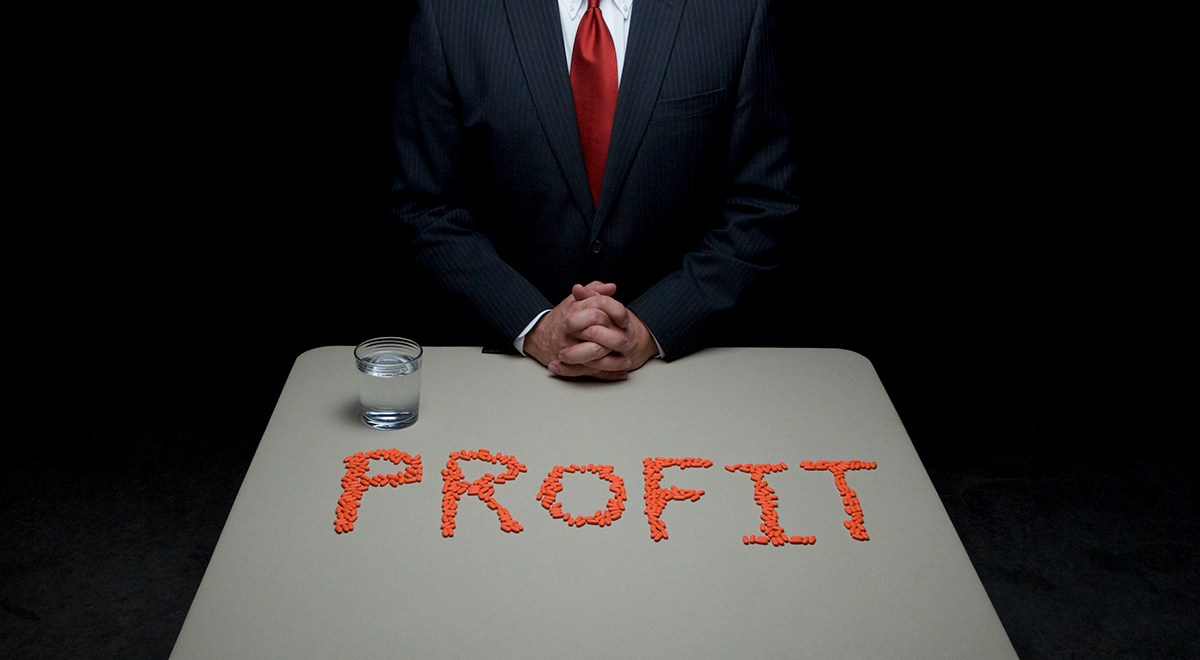Yet another Big Pharma company is drawing fire from lawmakers for raising the price of a life-saving medication by an obscene level. That company is ARIAD, and the drug in question is Iclusig (ponatinib), which is used for patients with chronic myeloid leukemia.
A few short years ago, that treatment was approximately $80,000 per year. Today, it’s nearly $199,000 a year – and 40% of that price increase came only in the last 12 months. In fact, ARIAD, a drugmaker based in Cambridge, Massachusetts, has raised the price of Iclusig by 8% each and every single quarter.
This latest price hike has caused protests from patients and sparked questions from Vermont Senator Bernie Sanders and his Democratic colleague, Senator Elijah Cummings of Maryland. The two lawmakers have written a letter to ARIAD CEO Paris Panayiotopoulos, demanding an explanation for the price increase. Comparing ARIAD’s actions to those of price gougers Martin Shkreli and EpiPen manufacturer Mylan, the senators wrote, “These outrageous sales tactics indicate that ARIAD is more concerned with its profit than with its patient.”
You think? Because they don’t…nor do Big Pharma’s apologists. At a recent panel discussion on the issue held at New York University, Paul Howard, a senior fellow and director of health policy at the right-wing think tank Manhattan Institute, said, “What other industry do you want to be more profitable than the one that’s attempting to get a cure for HIV? If you want to see investors send their money into a less risky industry — maybe software, the next Snapchat — by all means, cut the profits for the pharmaceutical industry.”
Howard argued that, despite the inflated costs of life-saving specialty drugs like Iclusig and the EpiPen, those prices are cheaper than the alternative – such as hospital care and lost productivity due to illnesses and death. He added, “Sometimes a drug that looks expensive is going to wind up being the cheapest option for treating that condition we have.”
He may have a point – but that argument rings hollow for patients who have been priced out of the market for the medications they need, while Big Pharma’s profits are higher than those of Big Oil, the insurance industry and even those of car makers. Howard also argues that “Patents expire [and] prices plummet” because of generic competition. Except this is not always true. Drug makers have found a way to game that system by making small, inconsequential changes to a medication (such as coming up with a different delivery system) in order to keep a lot on its patent – and its profits. This was the case with a treatment for opioid addiction, known as Suboxone.
Then of course there is the tired old argument about the costs of research and development. The problem there is that such R&D is usually carried out at public, taxpayer funded universities – so that explanation for price gouging doesn’t fly, either.
One of the major problems is that there are no legal restraints on such price gouging by Big Pharma. Most federal lawmakers are firmly in Big Pharma’s back pocket. When states attempt to pass laws to rein in the industry’s greed (such as California’s Proposition 61), its lobbyists go into action, buying off legislators and flooding the airwaves with fear-based disinformation threatening disaster if drug makers are prevented from jacking up their prices with impunity, or forced to explain such increases.
All we know is what we see. Patients in the U.S. pay several times what those in other countries pay for the same medications. In a Los Angeles Times editorial, Bernie Sanders points out that 20% of Americans between the ages of 19 and 64 can’t afford their medicines, while the elderly cut their doses in half in order to stretch their supplies.
At the same time, Big Pharma raked in $50 billion in profits in 2015, while the compensation for the ten highest-paid CEOs exceeded $327 million. This year, the industry is spending $100 million in California alone in order to defeat Proposition 61 – and more than 1200 lobbyists are busy on Capitol Hill to make sure this unsustainable status quo is maintained.
Where will it end?

